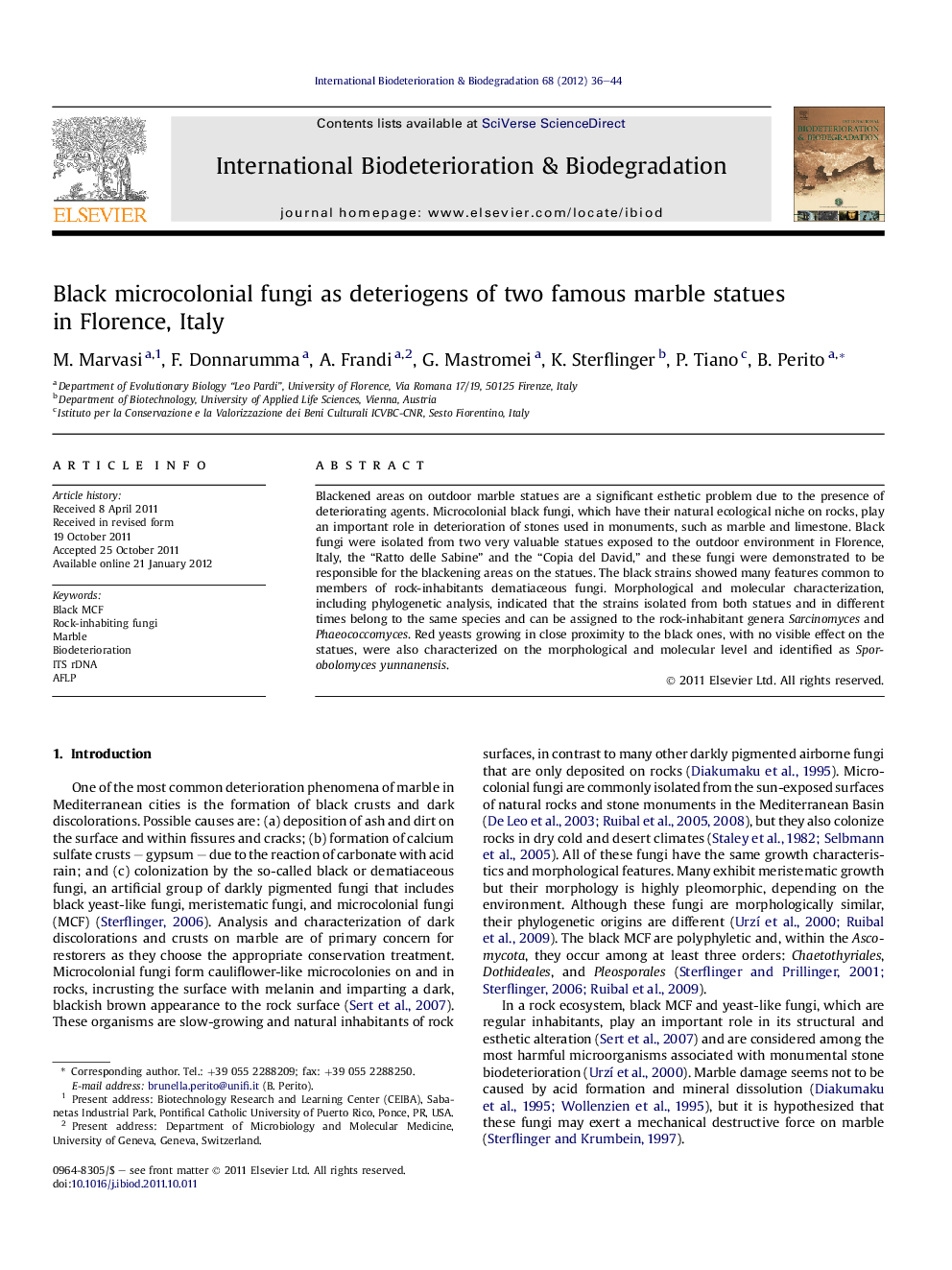| Article ID | Journal | Published Year | Pages | File Type |
|---|---|---|---|---|
| 4365254 | International Biodeterioration & Biodegradation | 2012 | 9 Pages |
Blackened areas on outdoor marble statues are a significant esthetic problem due to the presence of deteriorating agents. Microcolonial black fungi, which have their natural ecological niche on rocks, play an important role in deterioration of stones used in monuments, such as marble and limestone. Black fungi were isolated from two very valuable statues exposed to the outdoor environment in Florence, Italy, the “Ratto delle Sabine” and the “Copia del David,” and these fungi were demonstrated to be responsible for the blackening areas on the statues. The black strains showed many features common to members of rock-inhabitants dematiaceous fungi. Morphological and molecular characterization, including phylogenetic analysis, indicated that the strains isolated from both statues and in different times belong to the same species and can be assigned to the rock-inhabitant genera Sarcinomyces and Phaeococcomyces. Red yeasts growing in close proximity to the black ones, with no visible effect on the statues, were also characterized on the morphological and molecular level and identified as Sporobolomyces yunnanensis.
► Microcolonial black fungi were responsible for blackening of two statues in Florence. ► The isolated black strains were assigned to Sarcinomyces petricola. ► AFLP analysis suggested Phaeococcomyces chersonesus is a synamorph of S. petricola.
